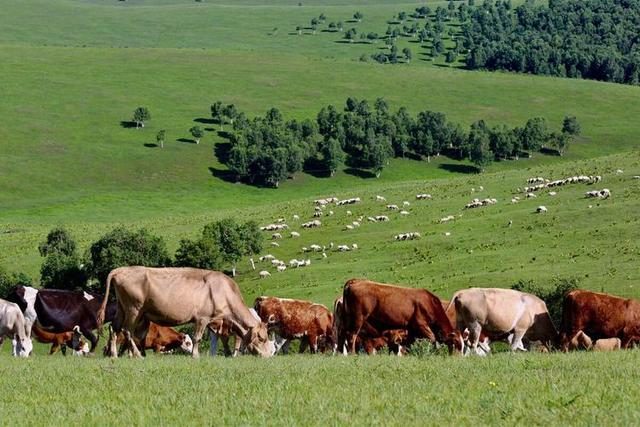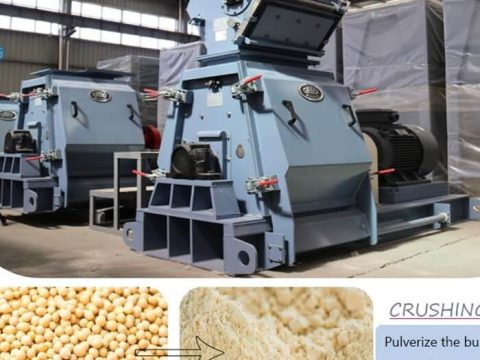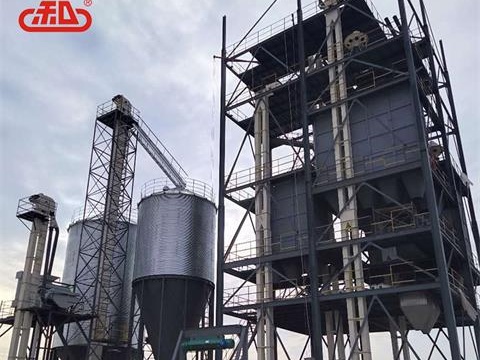Compared with powdered feed, pellet feed can reduce picky eating and waste, has comprehensive nutrition and high digestibility and utilization. It has a better promotion effect on animal intestinal health and growth performance, and has been widely used in actual production. This article outlines the application status, processing technology, quality identification and influencing factors of ruminant pellet feed, providing a reference for improving the quality and production efficiency of pellet feed in actual production and expanding the application of pellet feed for ruminants.
Pellet feed is mainly divided into hard pellet feed, expanded pellet feed, briquette feed, loose pellet feed, micro-pellet feed, etc. Since ruminants have a gastric system, the pellet feeds used are generally hard pellet feeds. The production steps are relatively complicated. They are made from powdered materials that are conditioned and then pressed through pelleting equipment. Compared with powdered feed, pellet feed avoids grading and feed waste during packaging and transportation, does not cause animals to be picky eaters, and has more comprehensive nutrition. In addition, due to the high temperature and high pressure process during the production process, the starch is fully gelatinized and easier to eat. Digestion and absorption greatly improve the animal's utilization rate of feed. In addition, high-temperature treatment will kill pathogenic microorganisms in feed. Feeding young animals can promote their intestinal health and development, reduce the occurrence of diarrhea in young animals, and improve their growth and production performance.

Application of pellet feed in ruminants
Pellet feeds used on ruminants mainly include concentrate supplemented pellet feed and full-price pellet feed. Since cattle have a large feed intake, their demand for roughage is also large. Using full-price pellet feed has a negative impact on feed production and cost. Control poses greater challenges, so more concentrates are used to supplement pellet feed, especially in calves. Feed form is very important for calf rumen development, and the physical and chemical properties of pellet feed can improve rumen power levels. Using pellet feed while feeding milk replacer can promote the development of the rumen, increase the proportion of regastric weight in empty body weight, thereby increasing the dry matter intake and feed conversion rate of calves, and ultimately promote the growth and development of calves. , laying a solid foundation for later fattening and milk production. For sheep, because they are picky about forage and have strong mysophobia, the palatability and food hygiene will have a great impact on the sheep's food intake. If roughage is fed directly to sheep, it will cause great waste and pose a greater challenge to my country's limited high-quality roughage resources. Some studies have shown that the daily weight gain and economic benefits of fattening sheep fed with full-price pellet feed are significantly higher than those of bulk full-price feed and refined and coarse feeding methods. Therefore, full-price pellet feed has greater application space and prospects for sheep. . Full-price pellet feed is based on the nutritional needs of animals in different periods. After mixing the roughage, concentrate feed and various feed additives required by ruminants in proportion, compared with the concentrate supplemented pellet feed, the nutrition is more balanced and the palatability is good. Easy to feed and safe and reliable. Studies have shown that full-price pellet feed can promote rumen development, reduce picky eating, and increase sheep feed intake, daily weight gain and feed conversion rate, thereby improving sheep production performance and reducing feed costs per unit weight gain.

After purchasing a good feed grinder, if it is not used correctly, it will not only shorten the service life of the feed grinder, but also affect the work efficiency, resulting in half the result with twice the effort.

14 containers, for a period of one week, double 520 pellet Feed Production Line, loading and shipping in the factory area.